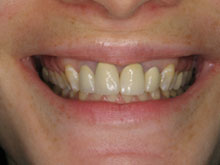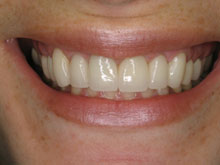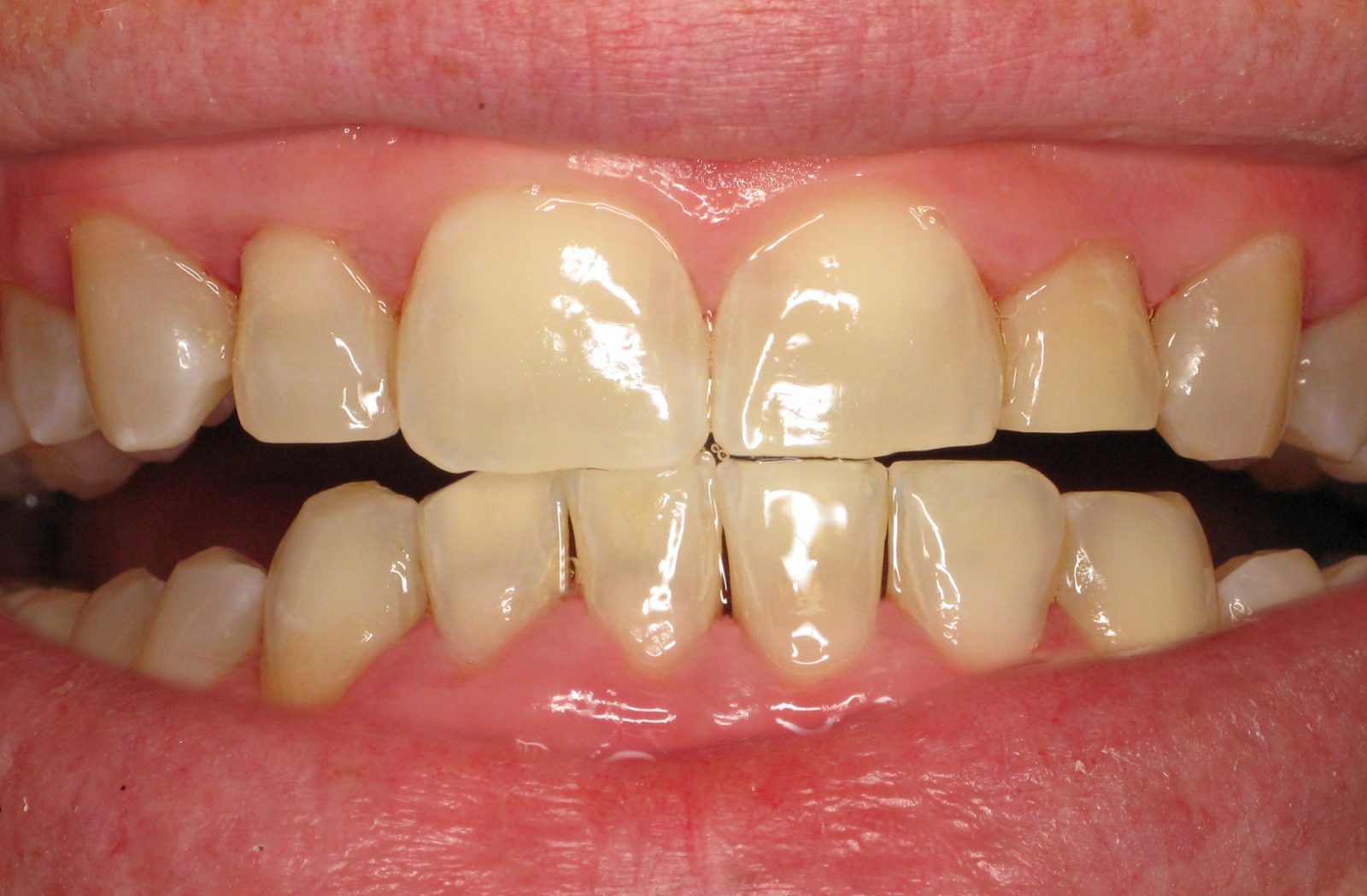What Are My Treatment Options for Gum Recession?
Addressing gum recession requires a tailored and effective treatment approach, and Laser Periodontics & Gum Surgery stands at the forefront of providing innovative solutions. Gum recession, often stemming from factors like periodontal disease, aggressive brushing, or genetic predisposition, necessitates intervention to restore the health and aesthetics of the gums.
Laser Periodontics & Gum Surgery offers advanced treatment options that harness the power of laser technology, providing precise and minimally invasive procedures. The clinic emphasizes patient comfort, quick recovery, and optimal results from soft tissue grafts to pinhole surgical techniques.
With a commitment to staying abreast of cutting-edge advancements, Laser Periodontics & Gum Surgery ensures that individuals experiencing gum recession receive the most advanced and personalized care available. Explore the comprehensive treatment options offered at Laser Periodontics & Gum Surgery to regain gum health and enhance your overall oral well-being.
What non-surgical treatments are available for gum recession?
Non-surgical treatment options for gum recession focus on addressing the underlying causes and promoting optimal gum health. Scaling and root planing, a meticulous cleaning procedure, removes plaque and tartar from tooth surfaces and beneath the gum line, smoothing the roots to discourage bacterial attachment.
Antibacterial mouthwashes control bacterial growth and promote a healthier oral environment. Professional dental cleanings, performed by skilled hygienists, complement at-home oral care by removing plaque and tartar, preventing the progression of gum disease, and fostering overall gum health.
These non-invasive approaches, when combined, form a comprehensive strategy to combat gum recession, allowing individuals to maintain their natural teeth and enjoy a healthier, more resilient smile. Regular check-ups and professional cleanings are integral components of preventive care to ensure the ongoing success of these non-surgical interventions.
How does scaling and root planing help address gum recession?

Scaling and root planing play a pivotal role in addressing gum recession by targeting the underlying cause: bacterial plaque and tartar buildup. This non-surgical procedure is a meticulous deep cleaning performed by dental professionals to remove accumulated plaque and tartar from tooth surfaces and beneath the gum line. Scaling involves carefully removing these deposits, eliminating the source of inflammation and infection. On the other hand, root planing smoothens the tooth roots to discourage the reattachment of bacteria and facilitate the healing process by eliminating the causative factors of gum disease.
Scaling and root planing help to halt the progression of recession and promote the regeneration of gum tissues. This procedure addresses existing gum issues and creates a healthier environment for the gums to reattach to the teeth. When performed with proper oral hygiene practices and regular dental check-ups, scaling, and root planing form a fundamental component of non-surgical interventions to manage and improve gum recession effectively.
What role does antibacterial mouthwash play in treating gum recession?
Antibacterial mouthwashes are crucial in treating gum recession by contributing to a hostile environment for harmful bacteria and promoting optimal oral hygiene. These mouthwashes typically contain active ingredients, such as chlorhexidine or essential oils, known for their antimicrobial properties.
As part of a comprehensive oral care routine, antibacterial mouthwashes help to reduce the bacterial load in the oral cavity, inhibiting the growth of microbes associated with gum disease and recession. These mouthwashes prevent further tissue damage and inflammation by disrupting biofilm formation and reducing bacterial plaque. Additionally, they aid in maintaining the results of other dental interventions, such as scaling and root planing, by supporting a healthier microbial balance.
Incorporating antibacterial mouthwashes into daily oral hygiene practices serves as an effective adjunct to combat gum recession, providing individuals with a valuable tool to enhance the overall success of their non-surgical treatment approach. Regular consultation with dental professionals ensures the appropriate selection and usage of antibacterial mouthwashes for optimal results.
How does a professional dental cleaning aid in treating gum recession?
Professional dental cleanings play a pivotal role in treating gum recession by offering a thorough and expertly performed removal of plaque and tartar, preventing the progression of gum disease. These cleanings are conducted by skilled dental hygienists and go beyond what can be achieved through regular at-home oral care. The meticulous removal of plaque and tartar during a professional cleaning addresses the root cause of gum recession, as these deposits harbor harmful bacteria that lead to inflammation and tissue damage.
By eliminating these accumulations, professional cleanings promote a healthier environment for the gums, facilitating their ability to reattach to the teeth and potentially reversing recession. Furthermore, the preventive aspect of these cleanings is paramount, as regular maintenance helps to impede the recurrence of gum disease and recession.
This comprehensive approach and patient education on proper oral hygiene practices underscores the significance of professional dental cleanings in the non-surgical treatment of gum recession, ensuring optimal oral health outcomes. Regular check-ups for professional cleanings are essential components of a proactive strategy to combat gum recession effectively.
What surgical treatments are available for gum recession?

Surgical treatment options for gum recession involve advanced interventions to restore gum health and address recession more directly. Soft tissue grafting, a common surgical procedure, involves taking a small amount of tissue from the patient’s palate or utilizing donor tissue to cover exposed tooth roots, promoting gum tissue regeneration.
Pinhole surgical techniques provide a minimally invasive approach, using a small incision to reposition existing gum tissue and stabilize receded areas. In more severe cases, guided tissue regeneration or bone grafting may restore damaged supporting structures. Laser-assisted surgeries have also emerged as a precise and efficient option for treating gum recession, often resulting in reduced discomfort and faster recovery.
These surgical approaches, offered by specialists like those at Laser Periodontics & Gum Surgery, provide tailored solutions to address gum recession, restore aesthetics, and ensure the long-term health and stability of the gingival tissues. Regular consultations with a periodontist help determine the most suitable surgical treatment based on the gum recession’s extent and underlying causes. Call (877) 440-3564 to schedule a consultation with one of our experienced specialists.
How does a gum grafting procedure address gum recession?
A gum grafting procedure is designed to effectively address gum recession by augmenting the diminished gum tissue. During this procedure, a periodontist takes a small amount of tissue from a donor site, typically the patient’s palate, and transplants it to the receded areas. This harvested tissue covers and protects the exposed tooth roots, restoring a healthy gumline and preventing further recession.
Different types of gum grafts, including connective tissue grafts, free gingival grafts, and pedicle grafts, each tailored to specific cases and patient needs. Gum grafting not only enhances the smile’s aesthetics by eliminating the appearance of elongated teeth but also helps to alleviate tooth sensitivity and reduce the risk of decay on exposed roots. The procedure promotes tissue regeneration, fostering a more resilient and aesthetically pleasing gingival structure.
Gum grafting, often performed with precision and expertise at specialized clinics like Laser Periodontics & Gum Surgery, remains a highly effective surgical solution for addressing gum recession and restoring overall gum health. Regular follow-ups with a periodontist are essential to monitor the progress and ensure the long-term success of the grafting procedure.
What is the purpose of pocket reduction surgery in treating gum recession?
Pocket reduction surgery, or flap or osseous surgery, is a comprehensive intervention to treat gum recession and the associated effects of periodontal disease. The procedure aims to reduce the depth of periodontal pockets, which are spaces that form between the teeth and gums due to bacterial infection. In cases of advanced gum disease, these pockets deepen, contributing to gum recession and bone loss.
Pocket reduction surgery involves lifting the gum tissue to access and thoroughly clean the tooth roots and surrounding bone. Tartar and bacterial deposits are removed, and irregularities in the bone may be smoothed to eliminate hiding places for bacteria. The repositioned gum tissue is then secured in place, minimizing the pockets and promoting the healing and regeneration of both gum and bone tissues.
By addressing the underlying causes of gum recession and creating a healthier oral environment, pocket reduction surgery plays a vital role in halting the progression of periodontal disease, preserving natural teeth, and restoring gum health. Regular post-operative care and maintenance are essential for optimal results and long-term success.






